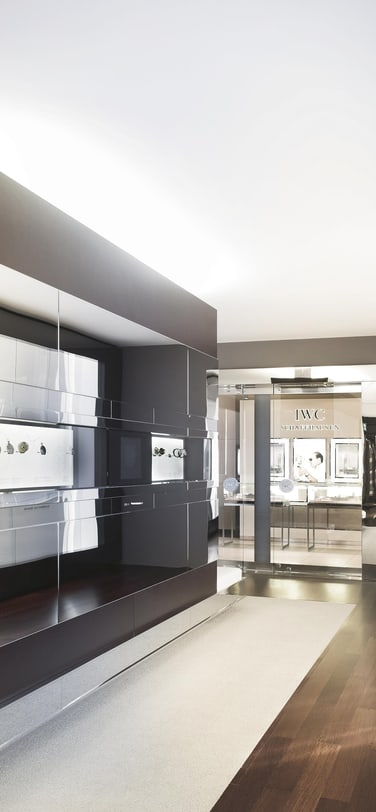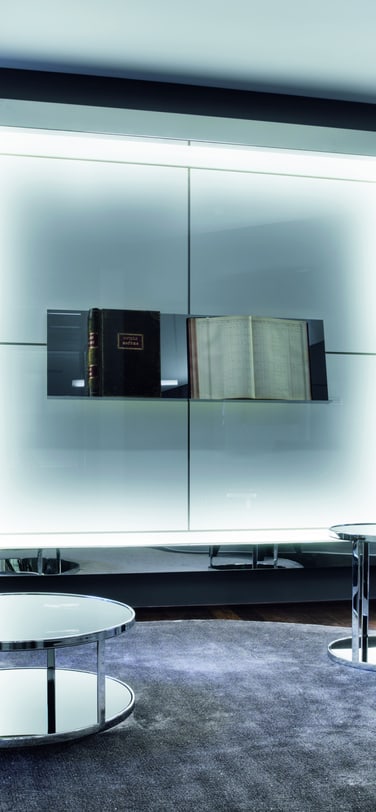IWC Schaffhausen Museum
The greatest icons from Schaffhausen, masterpieces of engineering and curiosities that have been lost in time: At the IWC Museum you can experience the fascinating history of the largest watch manufacturer in German-speaking Switzerland, up close and in a multimedia format. An engaging audio guide, integrated into the free IWC app, provides surprising background information on many of the more than 230 items. Guests may also experience the IWC Museum with a private guided tour.


Individual Museum Visit
Visit the museum at your own pace with our immersive audio guide. Visitors may access the audio guide on their personal smartphones via the complimentary IWC App. As an alternative, a limited number of iPads, complete with headphones, are available for use within the museum and are included with the purchase of an entry ticket.
Days: Tuesday – Saturday
Time (see special opening hours further below)
- Tuesday to Friday: 9:00 – 17:30
- Saturday: 9:00 – 15:30
Languages audio guide: English, German, French, Italian, Spanish, Chinese, Japanese, Russian
Prices
- Adult: CHF 6
- Reduced admission (students, retirement pension or disability): CHF 3
- Children under the age of twelve years: Free
If you visit the museum on a Saturday, you will have the opportunity to observe a watchmaker at work. The current collection can be viewed at the IWC Boutique next to the museum.

Private Museum Tour
Duration: 1 hour
Participants: 1-15
Language: Upon request
Days: Monday – Saturday
Time: Monday to Friday 10:15–11:15 Saturday 9:30 – 12:00
Includes: Private guided museum tour with personal Ambassador
Price: CHF 150.00 per group
Opening Hours
Tuesday to Friday: 9 am - 5:30 pm
Saturday: 9 am - 3:30 pm
Opening hours public holidays 2025
Museum Night, Saturday, 20th September 2025: 5:00 PM – 12:00 AM
Directions
How to get here: The museum is housed within the main IWC Schaffhausen building on the edge of the Schaffhausen historic district, on the banks of the Rhine.
On foot: Approx. 10 minutes on foot from Schaffhausen train station.
By public transit: Take bus line 5 (Buchthalen) to the “Rhybadi/IWC” bus stop.
By car: Coming from Zurich/Winterthur, take the exit marked “Schaffhausen Süd, Zentrum, Kreuzlingen” in the tunnel and then head toward the city center (Zentrum). If you are coming from Stuttgart/Singen/Donaueschingen, take the “Schaffhausen Süd, Rheinfall, Kreuzlingen” exit in the tunnel and then head toward the city center (Zentrum). Limited parking possibilities are available at IWC Schaffhausen for Museum and guided tours guests.
IWC SCHAFFHAUSEN
IWC Schaffhausen Museum
Baumgartenstrasse 15
CH-8201 Schaffhausen
Switzerland
FAQ
Is parking available at IWC Schaffhausen?
Limited parking possibilities are available at IWC Schaffhausen for Museum and guided tours guests. Please contact us to ensure parking availability for your visit.
Is it permitted to take photos and videos in the IWC Museum?
Photography and filming is generally allowed in IWC Museum for private purpose. Please note that employees can't be filmed or photographed.
Are animals allowed in the Museum?
Animals are not permitted into IWC Museum for reasons of hygiene and safety.
Is it possible to purchase a voucher for a guided tour?
Yes, gift vouchers for a private guided museum tour can be purchased. Please contact us for any inquiries.
What is the minimum age to take part in a Museum tour?
Our standard guided museum tours are designed for visitors aged 12 and above. However, specialized children's tours are available upon request and are subject to availability during regular museum hours. Please contact visit@iwc.com for inquiries and bookings.
Is the IWC Museum accessible to visitors with impaired mobility?
Yes, the IWC Museum is fully accessible.